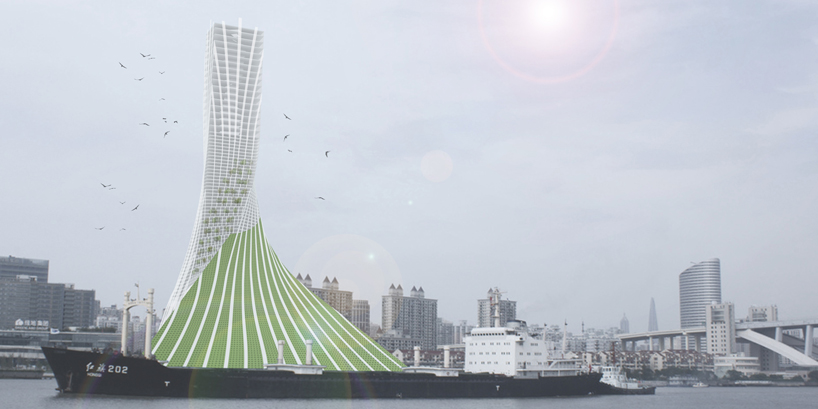
VetiVertical City by eugenio aglietti from italy
designer's own words:
Shanghai is one of the Chinese cities with the highest levels of CO2 emissions per capita and held the lead as the biggest carbon dioxide emitter between 2004 and 2007. Another problem that affects the city relates with the quality of water, which is severely contaminated: about 80% of the water comes from the Huangpu river, one of the most polluted rivers in the world. Due to industrial effluents the river contains high levels of chlorine, nitrogen, phosphorus and toxic heavy metals, forcing most of residents to buy bottle drinking water rather than filter domestic water.
In according with the pledge of China to reduce CO2 emissions per unit of Gross Domestic Product by 40 to 45 percent by 2020, the project pursues a dual objective: firstly, the purification of rainwater and wastewater produced by the building in order to recycle it for office and domestic use; secondly, the carbon dioxide reduction through the absorption of amounts of CO2 contained in the atmosphere. It is possible thanks to the combination between the properties of Vetiver plant with the features of a new kind of skyscraper: the VetiVertical City.
The ‘Chrysopogon zizanioides’, well known as Vetiver, is a tropical plant with unique characteristics, so much that experts call it the miracle grass. Since the 80s, the Vetiver System (‘VS’), based on the use of this plant, has been tested in many countries for soil conservation, slope stabilization, pollution control, water quality improvement and many other environmental applications. Thanks to high tolerance to adverse climatic situations, this plant can be grown over a very wide range of climatic conditions and virtually used anywhere across the planet. One of the main features of Vetiver are the finely structured and penetrating roots, used as hyper-accumulators of nutrients and heavy metals, with a reduction by 80-90% after 48-72 hours of treatment.
Additionally the Vetiver System has great potential for atmospheric carbon dioxide uptake and could be able to solve many problems relating with air pollution. The CIAT researchers reported that plants like Vetiver can absorb about 5,3 kg of CO2 per square meter during a year. As the annual global increase of CO2 is estimated to be about 20 billion tons, we only probably need to plant 4,000 billion Vetiver plants all over the world to absorb all this gas, but to cover this space probably we need to change the perspective of the horizontal spread of Vetiver into something more… vertical.
If Vetiver has these miraculous features, why don’t use it in architecture for sustainable purposes? The 410 meters tall VetiVertical City, located on an area between the Huangpu river and the Luwan district, in front of the area which hosted the World Expo in 2010, aims to match the multi-functionality of a skyscraper with the new sustainable technology of VS. The south facade of the building is conceived as an artificial mountain growing from the banks of Huangpu, where 280.000 Vetiver plants can implement a huge sustainable potential. The Vetiver System is integrated with strip-shaped double-sector ducts that have the important function to transport wastewater to Vetiver plants and, after 2-3 days of treatment, to send back to the building purified water through pumps located at the feet of the Vetiver land.
The VS is a multi-sustainable system: it’s environmental sustainable, it’s economically sustainable (costs are 70% cheaper than traditional engineering methods) and it’s social sustainable (can be used in every country, from the richest to the poorest). ‘Vetiver can literally make sustainability sustainable’ as Noel Vietmeyer said during the First International Conference on Vetiver in February 1996.
View from Expo area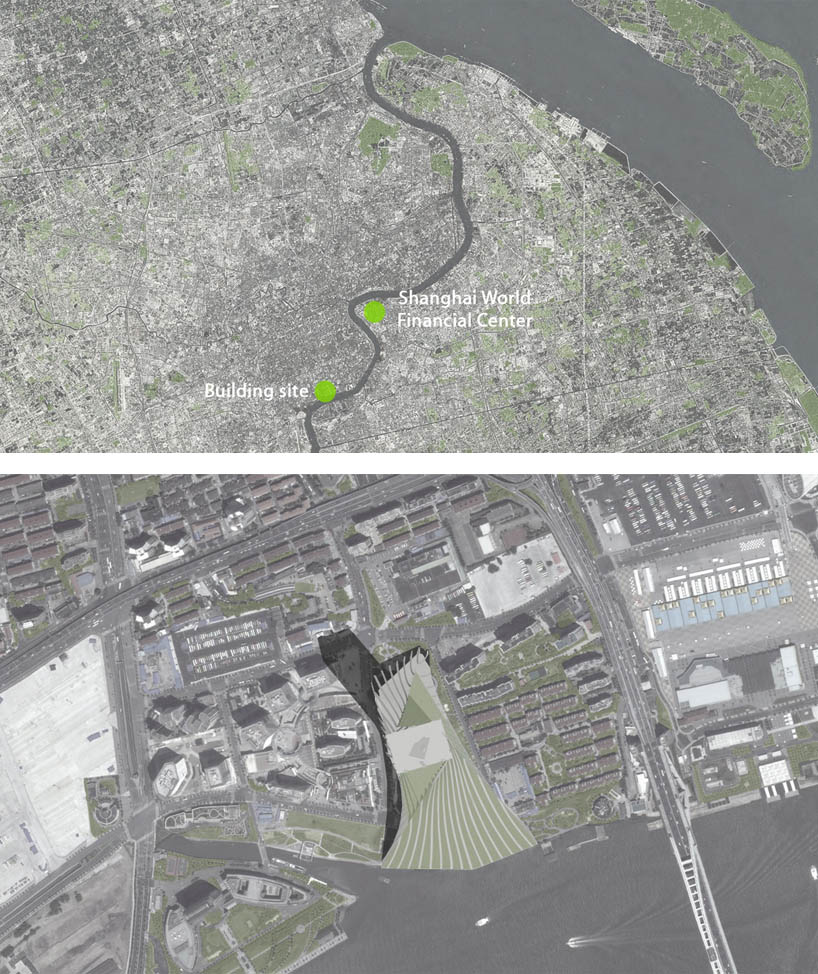
Building site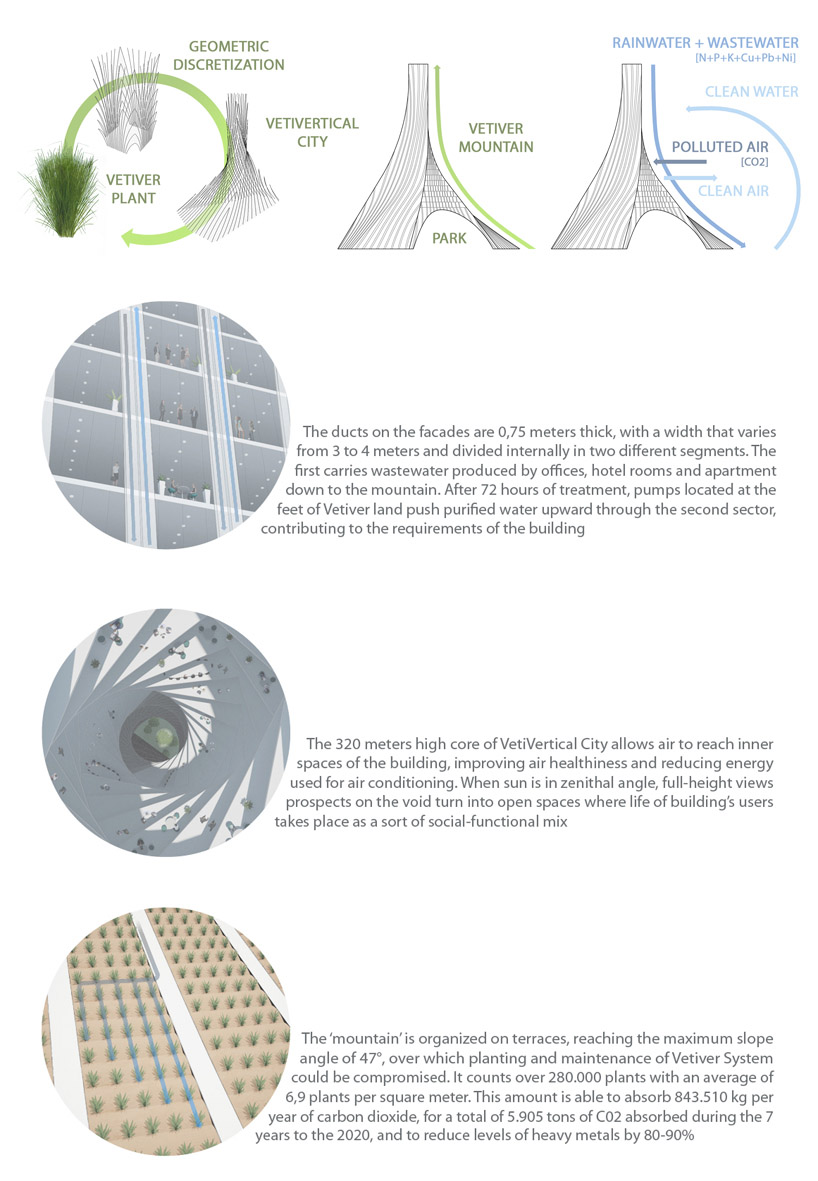
Concept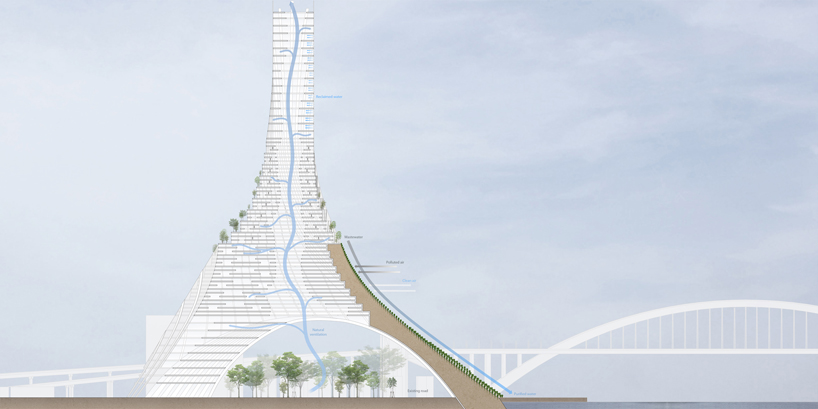
North-south section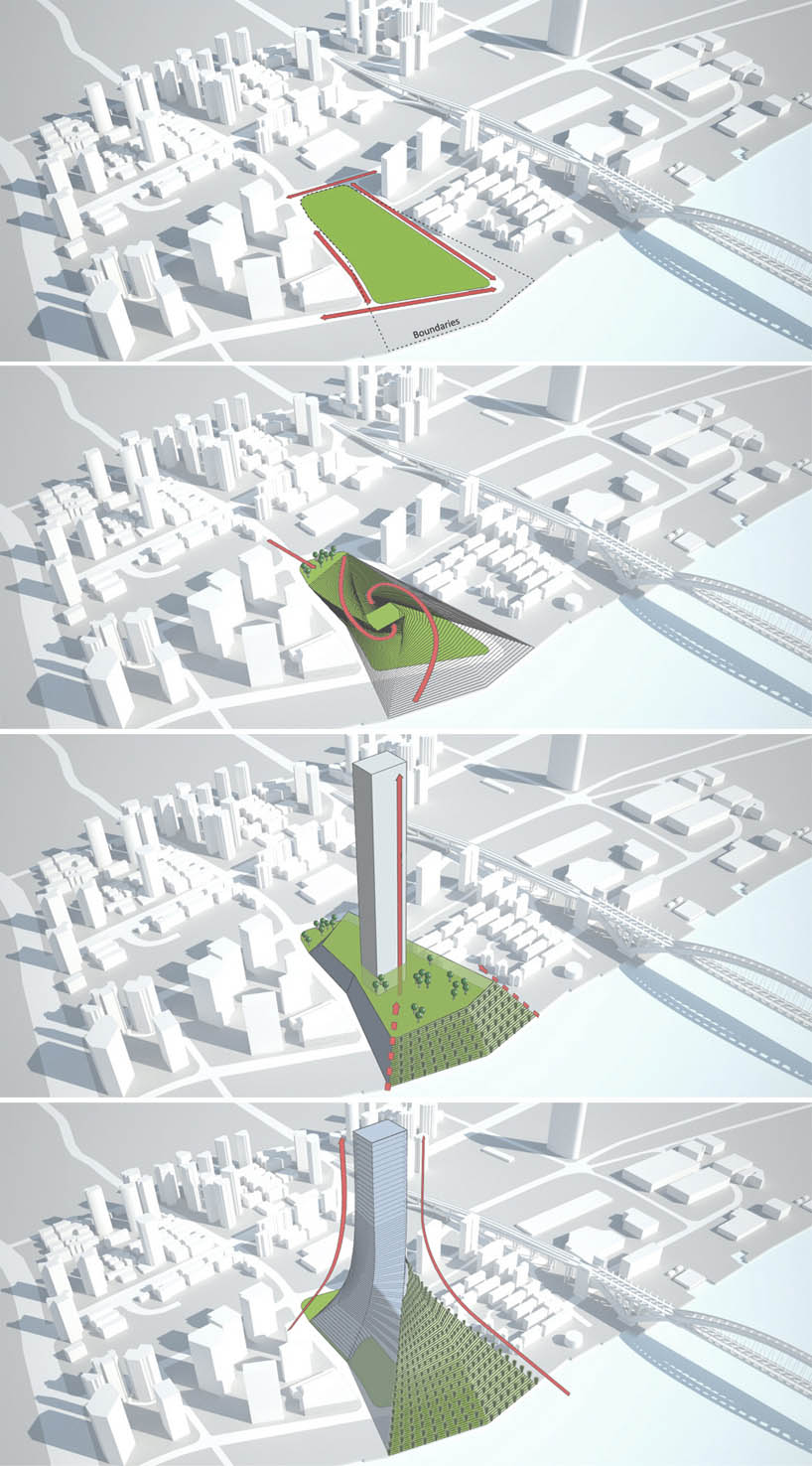
Project diagrams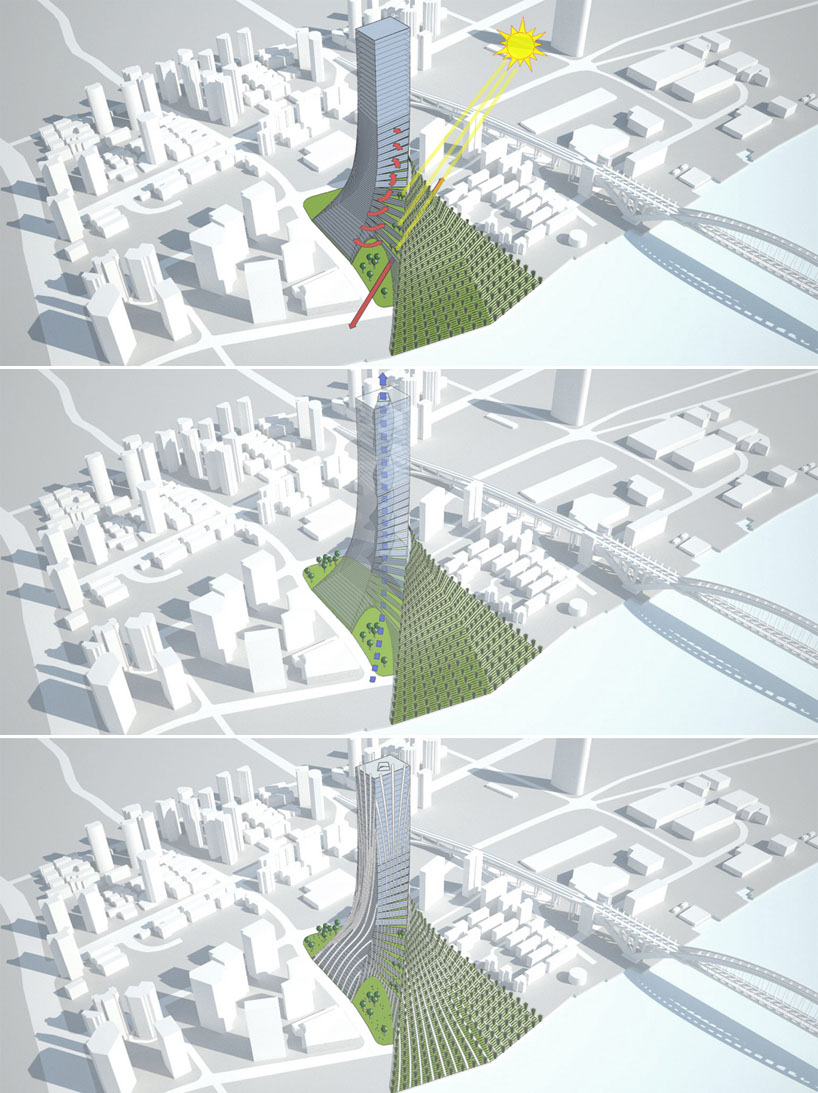
Project diagrams